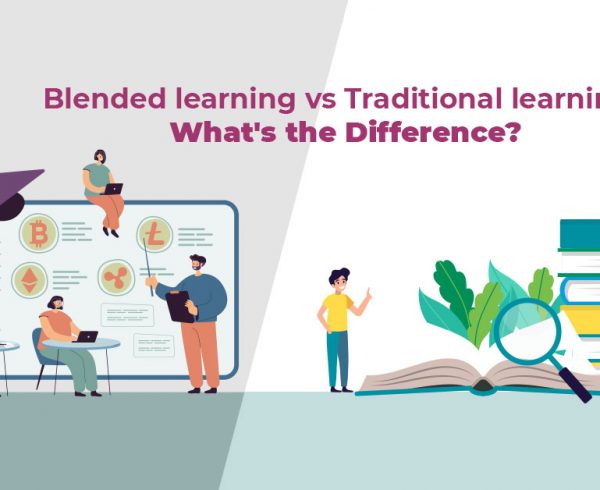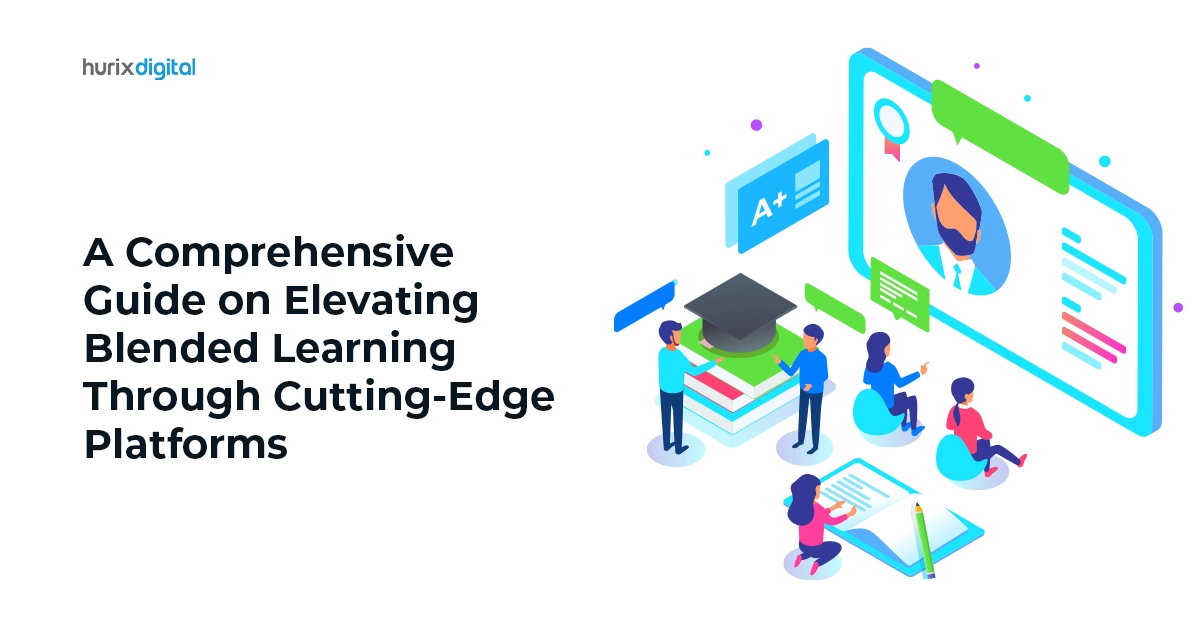Summary
This article provides a comprehensive overview of blended learning, including when it is appropriate to use it in the workplace, the benefits of a blended learning approach, and a few blended learning examples.
Blended learning is an approach to learning and development that combines multiple learning modalities to create a holistic learning experience. It integrates online learning resources and activities with traditional face-to-face instruction or other offline learning methods. This article provides a comprehensive overview of blended learning, the contexts in which it is beneficial, and a few blended learning examples that can give you ideas for your blended learning program.
Table of Contents:
- When to use Blended Learning in the Workplace
- Uses of Blended Learning
- Benefits of Blended Learning in Corporate Training
- Conclusion
When to use Blended Learning in the Workplace
Organizations should consider using blended learning in the workplace when they encounter the following scenarios:
- Diverse Learning Needs
Blended learning is suitable when learners have varying preferences, learning styles, and schedules. By offering a mix of online and offline components, organizations can accommodate different learning preferences and provide flexibility for learners to access content at their own pace.
- Complex or Multifaceted Topics
For complex subjects that require a deeper understanding or hands-on practice, a blended learning approach can be beneficial. Online modules can deliver theoretical content, while face-to-face sessions, workshops, or simulations provide opportunities for learners to apply knowledge, engage in discussions, and receive feedback.
- Geographically Dispersed Learners
In organizations with geographically dispersed teams or locations, blended learning overcomes logistical challenges. Online components allow learners to access training materials from any location, while occasional face-to-face sessions or virtual instructor-led training (VILT) sessions promote collaboration and foster a sense of community.
- Training that Requires Application or Skill Development
Blended learning is particularly effective when training involves practical application or skill development. Online modules can provide foundational knowledge, and in-person workshops, on-the-job training, or simulations can facilitate hands-on practice and reinforce learning through real-life scenarios.
- Cost and Time Efficiency
Blended learning can offer cost and time advantages compared to purely face-to-face training. Online modules reduce travel and venue costs, and learners can complete self-paced online activities without the need for synchronous scheduling. Face-to-face sessions can be reserved for high-impact activities that benefit from in-person interactions.
- Continuous Learning and Ongoing Support
Blended learning supports continuous learning by providing learners with access to online resources and activities beyond face-to-face sessions. Online platforms, discussion forums, or virtual coaching sessions can enable ongoing support, reinforcement, and knowledge sharing even after formal training events.
Uses of Blended Learning
Here are a few instances where blended learning has aided in workforce learning and development:
- New Employee Onboarding
When onboarding new employees, the blended learning model is quite effective for providing a comprehensive and engaging learning experience. One of the blended learning strategies in this context would be to combine online modules or e-learning courses with face-to-face sessions or workshops. Online modules can cover introductory topics, policies, and procedures, while face-to-face sessions can facilitate hands-on activities, group discussions, and mentorship opportunities.
- Skill Development and Training Programs
When upskilling or reskilling employees, a blended learning approach can effectively combine theoretical knowledge with practical application. You could offer online courses or modules to deliver foundational knowledge and theories. Supplement these with hands-on workshops, simulations, or on-the-job training to provide opportunities for learners to apply their knowledge in real-world scenarios.
- Leadership Development Programs
Leadership development programs often require a combination of conceptual learning, reflection, and interpersonal skill development. Utilize a combination of online resources, such as videos, e-learning modules, or virtual instructor-led training (VILT) sessions, to deliver leadership theories, case studies, and self-paced learning activities. Complement these with face-to-face workshops, group discussions, and role-playing exercises to foster peer collaboration, mentorship, and leadership skill application.
Also Read: Unlock Your Leadership Potential: The Ultimate Guide to Leadership Development
Benefits of Blended Learning in Corporate Training
Implementing a blended learning program in a corporate setting offers several benefits that can enhance the effectiveness of learning and development initiatives. Here are some of the key advantages of blended learning in training and development:
- Flexibility
Blended learning provides flexibility for employees to access learning materials and resources at their convenience. Online components can be accessed from anywhere, allowing employees to learn at their own pace and schedule, and reducing barriers related to time and location constraints.
- Personalization and Customization
A blended learning approach allows for personalized learning experiences. Employees can progress through online modules based on their individual needs and learning styles.
- Consistency
Blended learning ensures consistency in knowledge transfer while allowing for interactive and personalized onboarding experiences. It provides flexibility for learners to access content at their own pace while also promoting engagement and relationship-building through in-person interactions.
- Self-paced
Blended learning enables learners to acquire theoretical knowledge at their convenience, fostering self-paced learning. The practical components enhance skill development through experiential learning, feedback, and collaboration. Learners can bridge the gap between theory and practice effectively.
Also Read: 5 Pro-Tips to Build Cost-Effective Blended Learning Solutions
Conclusion
Blended learning is a versatile approach that caters to the diverse needs of learners and can enhance engagement, knowledge retention, and skill development. However, it’s essential for organizations to carefully analyze their specific learning and development needs, audience characteristics, available resources, and technological infrastructure before implementing a blended learning program. This ensures that the blend of online and offline components is strategically designed to optimize learning outcomes and align with organizational objectives.
At Hurix, we understand the importance of blended learning which is designed thoughtfully and caters to the diverse needs of a global multinational organization. If you need help with defining the blended learning strategy for your organization, contact marketing@hurix.com. Our experts will guide you through the entire process from strategy and design to development and implementation.











